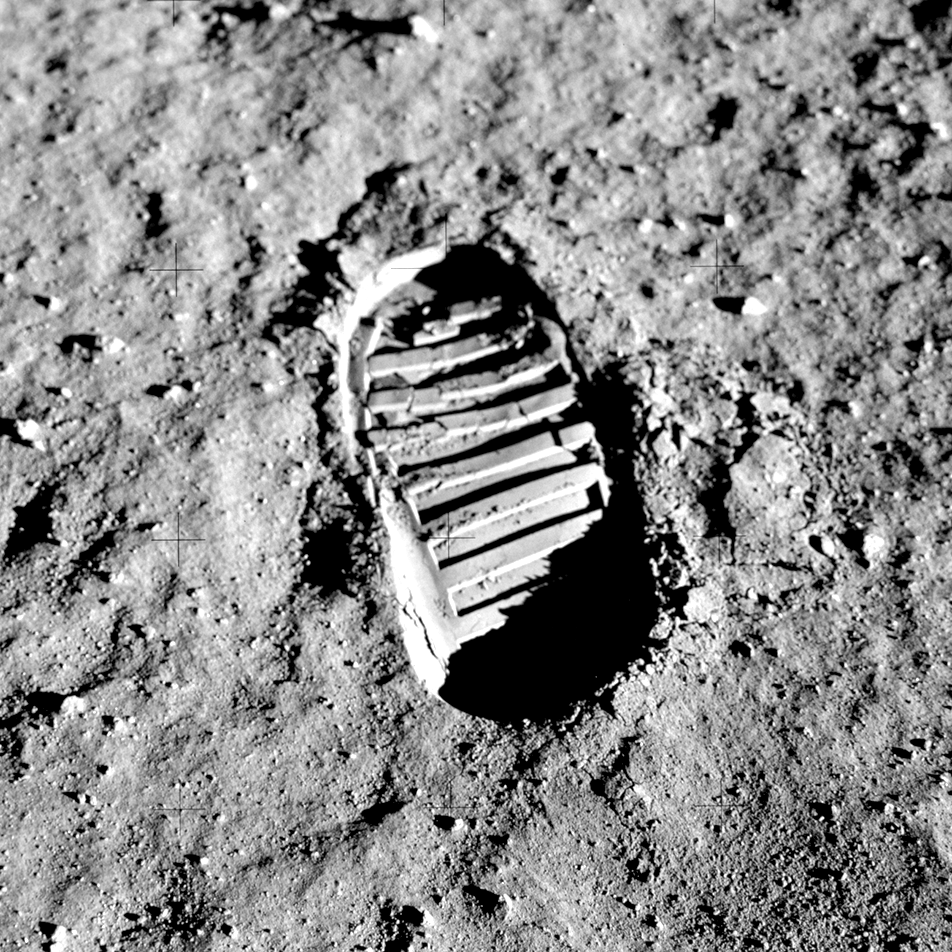
The Moon is almost entirely covered by regolith, a fine-grained soil made by the cumulative impacts of meteorites over millions of years. As seen above, astronaut boot-prints show that the upper regolith is easily compressed because it is highly porous.
There has been a longstanding debate since the 1960s about how porous is the regolith. Since the porosity (the fraction of volume that consists of empty space) strongly affects how the surface reflects light, conducts heat, and supports loads, scientists and engineers want to know the porosity (and how it changes in the top 10 meters) to accurately interpret remotely sensed data, and plan for future trips to the surface. The Apollo regolith samples were compacted during their trip to Earth, so no direct measurements of their original porosity are possible (see Apollo Lunar Surface Closeup Camera (ALSCC) images in the bottom). Instead, the returned soil samples are compared to orbital observations of the sample locations. In a paper recently published in Icarus, Hapke and Sato tackled this issue by combining laboratory measurements of returned soil samples with spectral observations acquired by the Lunar Reconnaissance Orbiter Camera (LROC), and the Japanese Kaguya Multiband Imager instruments.

Using a reflectance model developed by one of the authors [Hapke, 2012], this new work examined the various factors that control how much light is reflected by the regolith. The inherent albedo of the soil, determined in large part by its composition, is one such control, as are the porosity and the roughness of the surface. Because the composition of the soil is known from the samples, Hapke and Sato were better able to model the other physical properties of the regolith using a model lunar reflectance properties [Sato et al, 2014] obtained from multi-temporal and multi-spectral observations LROC Wide Angle Camera. They concluded that the porosity of the upper lunar regolith is 83+/-3%. An amazing result! Only 17% of the upper regolith is grains of soil, while the rest is empty space! But this number only applies to the uppermost surface - perhaps the top few millimeters to centimeters. Below that the weight of the regolith compresses the lower levels.
This new paper highlights the important work enabled by having both samples collected from well characterized locations on the Moon, and high-quality data from orbital missions. At present, the Moon and the asteroid Itokawa are the only the locations in the Solar System where we have samples from known locations on the surface, and the Moon is the only body for which we have samples in sufficient volume to do the type of study performed here. Thus much of our knowledge about how to interpret observations of other planetary bodies comes from our understanding of the Moon, and advances in lunar science have Solar-System-wide implications.
Read the full story of regolith porosity in the new Lunar Reconnaissance Orbiter special issue of Icarus:
The porosity of the upper lunar regolith, Hapke, B., H. Sato, (2016) Icarus, 273, 75–83, doi:10.1016/j.icarus.2015.10.031.
Investigate lunar soil in a closeup 3D picture of Apollo 11 ALSCC (AS11-45-6697, area shown is only 72 by 83 mm or 2.8 by 3.3 inches )!
Related featured images:
What a Blast! – Revisiting the Chang'e 3 Landing Site
Astronaut's Eye View of Apollo 16 Site
Apollo 16, Footsteps Under High Sun
Published by Hiroyuki Sato on 8 June 2016